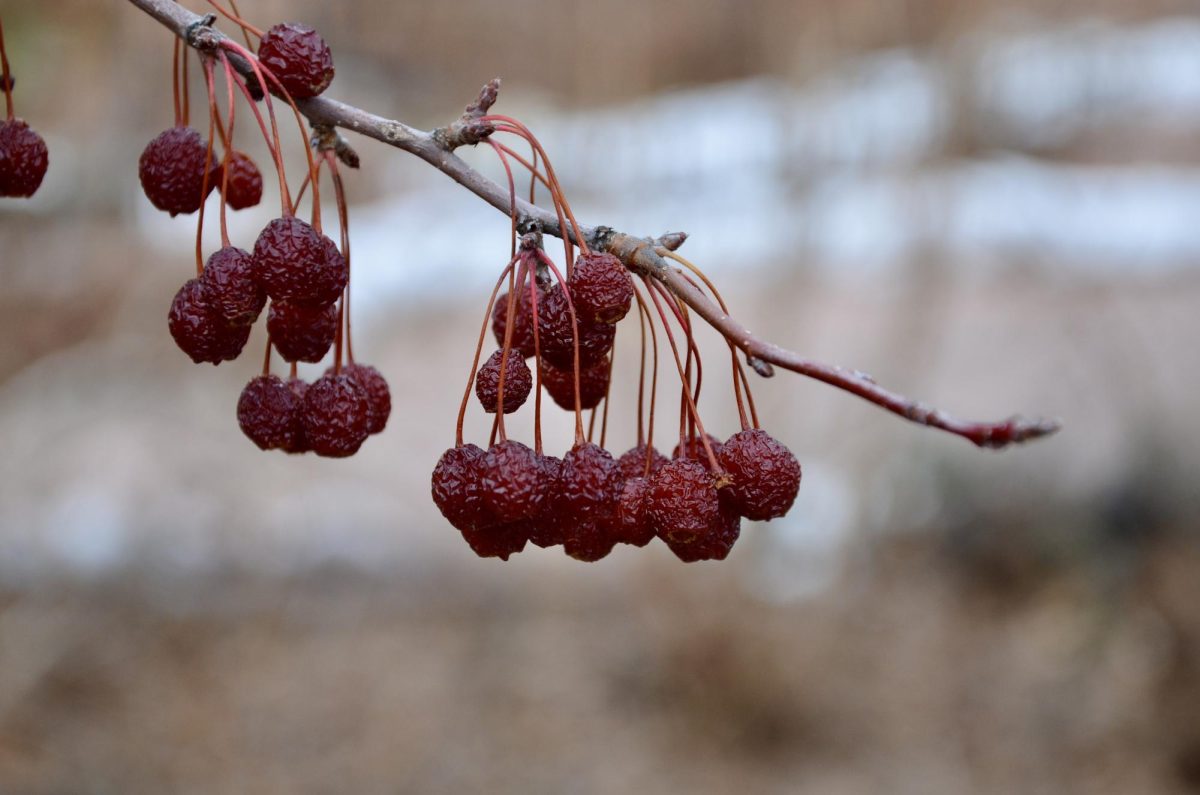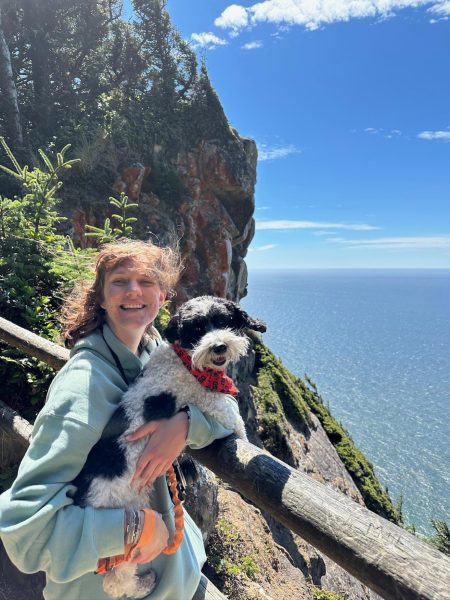Look out any window, and I bet a plant is in view. Plants account for an estimated 80% of the Earth’s biomass and number approximately 8.7 billion species. Plants sustain us and sustain the species that sustain us. They produce the air we breathe, the food we eat, and the views we hike through. But in an ever-changing environment, what are we doing to preserve the plants that hold our society up?
Here at the University of Utah, when it comes to environmental and outdoor research topics, we probably have a researcher for it, and plant conservation is no exception.
Our campus
Nestled in the foothills of the Wasatch Mountain Range, a short walk from the University of Utah’s dormitories and right next to the Natural History Museum of Utah is Red Butte Garden and Arboretum.
Red Butte Garden is the state arboretum and the largest botanical garden in the Intermountain West. It is also an occasional concert venue. Most importantly, though, as their website well articulates: “Red Butte Garden is a museum of living plants. Plants are collected for their horticultural merit, use in research and conservation, and for their historical value.” Outdoor work is critical for Red Butte’s maintenance and continued research as a plant museum. The center has many volunteer opportunities to keep the garden in prime condition, including horticulture and plant curation.
Sarah Jack Hinners, PhD, is the Director of Conservation and Research at Red Butte Garden. I had the opportunity to speak briefly with her about some of her research work.
This summer, Hinners and her team are collecting seeds from two cliff-edge populations of Physaria tumulosa, or Kodachrome bladderpod, in Kane County, Utah. This flowering plant is incredibly uncommon despite being easy to grow. After fieldwork collection, cross-pollination experiments in the Red Butte greenhouse will begin to study how closely the two populations are related and what the findings might mean for species conservation.
In addition to managing specific projects out of Red Butte Garden, Hinners also leads a research stream with the Science Research Initiative in the U’s College of Science. Her students have been conducting trials on seed viability and germination protocols for some of Utah’s rare native plants. The plants grown from these trials then go to Red Butte to support ongoing rare plant conservation efforts and where garden guests view them.
These projects play essential roles in Red Butte Garden’s ex-situ conservation work (the less invasive work done at the Red Butte Garden facilities that does not disturb natural flora). Hinners explained that ex-situ conservation looks to understand how plant seeds reproduce and how to best preserve that genetic material in off-site “seed banks.” Red Butte’s website further explains, “We are stewards of the at-risk plants in our region and protecting them is a key component of Red Butte Garden’s mission. We hope to mitigate threats and preserve genetic information so that rare populations may recover in their native habitats, thereby conserving the biodiversity of our native flora and fauna.”
The world
Red Butte’s work with seed banks preserving plants and their growing protocols is not a new endeavor. “Seed banks” are seed sample repositories for plant research at various institutions. The first seed bank arose in the Soviet Union’s Bureau of Applied Botany under its director: Russian biologist Nikolai Vavilov.
Vavilov’s inspiration came from the then-new field of genetics and firsthand experience of the disastrous impacts that follow widespread crop failure in poor villages. He quickly realized that weakness in human crops came from a lack of something significant in wild plant species: biodiversity. The genetic diversity that Vavilov saw in wild ecosystems was not just essential for plant species’ health. It was, he intuited, critical to human survival. So, in the 1920s, Vavilov started collecting seeds, grains, fruits, and nuts. According to the Science History Institute Museum and Library, “He eventually made 115 expeditions to 64 countries, collecting 380,000 samples.” This first-ever seed bank was revolutionary and massive, with nearly 25,000 workers under Vavilov by 1939. However, it was not without dangerous enemies.
Not long after Vavilov started the endeavor, World War Two broke out. Not only that, but the growing communist party believed purely in the “nurture” of “nature vs. nurture.” They viewed the human condition as malleable and tied to the institutions around them, which they could replace with what they believed to be the ideal ones–something that the science of genetics directly contradicts.
In 1941, Nazi Germany invaded the Soviet Union. They laid siege to Leningrad (now St. Petersburg), the home of the Bureau of Applied Botany and their seed bank. There were enemies without and within. The Bureau’s own government did not support their work or care if it continued, and the Nazi siege brought disastrous famine to Leningrad, the very thing Vavilov wanted to end. Yet despite the reasons to give up and use the seed stores to alleviate their suffering, the scientists held firm to their mission. They would not lose the biodiversity they sought to conserve, and at the end of the siege, nine of the seed bank’s scientists died of starvation. The Science History Institute explains that “One emaciated scientist actually died at his desk, holding a packet of nutritious peanuts in his hand.” Even Nikolai Vavilov died of starvation in a Ukrainian jail after Soviet agents arrested and tortured him.
Although tragic, this story inspires today’s plant biologists and conservationists, especially with the social issues we face. Climate change and drastic environmental changes are changing the makeup of our ecosystems, and plants are facing challenges we are still trying to understand. Additionally, crops today are still incredibly inbred, endangerment or extinction threatens species, and increased political divisions and polarization have left many scientists anxious about the state of academic research.
Vavilov and his plant scientists saw the importance of plant conservation and biodiversity. For them, it was clearly about protecting plant species for the good of everyone. Their work continues at the renamed N. I. Vavilov All-Russian Scientific Research Institute of Plant Genetic Resources. However, without the original Bureau’s efforts, the new Scientific Research Institute of Plant Genetic Resources, Red Butte Garden, and Sarah Hinners may not be able to do the work they are doing today.
And you
Plants are a key part of the outdoors, and there are plenty of ways you can get involved in plant conservation work:
Visit Red Butte Garden! There are plants to see year-round, and admission is free for University of Utah students. It is a great place to de-stress after a big exam or to take a date. You can also show your support by attending one of their Outdoor Concert Series events (but be aware that concerts can sell out quick).
Alternatively, you can volunteer at Red Butte Garden. Red Butte recruits seasonal volunteers every spring for plant cultivation, garden designs, greenhouse work, and water conservation. Check out their volunteer page here for important dates, more information, and future opportunities if you found this a little late.
There are more plant-conservation-related projects on and off campus. This includes Sageland Collaborative’s Utah Pollinator Pursuit project, which aims to preserve critical pollinator species that keep our plant populations healthy. Additionally, check out the Edible Campus Gardens, a garden-based project on campus engaged in sustainable urban food production and education.
Most importantly, when hiking and enjoying nature, be careful and respectful of our native plants. This is their home, and it does not hurt to take a little time to treat plants in the ways they need…and deserve.
To learn more about the N. I. Vavilov All-Russian Scientific Research Institute of Plant Genetic Resources, check out the Science History Institute Museum and Library’s article here. And if you want even more Red Butte Garden news, check out their “What’s Blooming Now” blog here.



